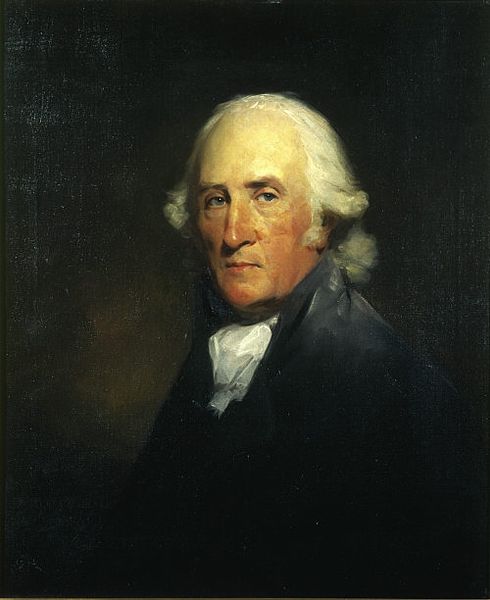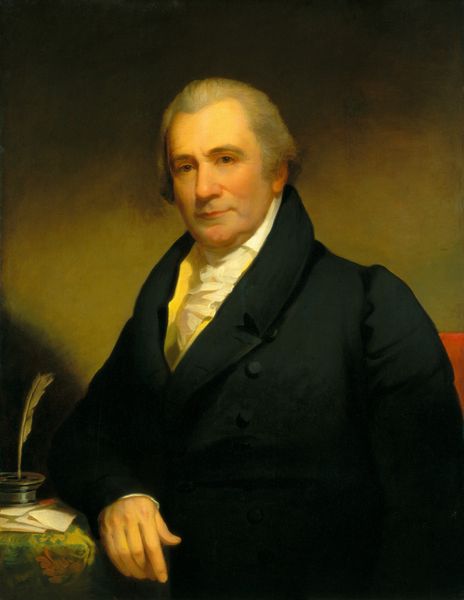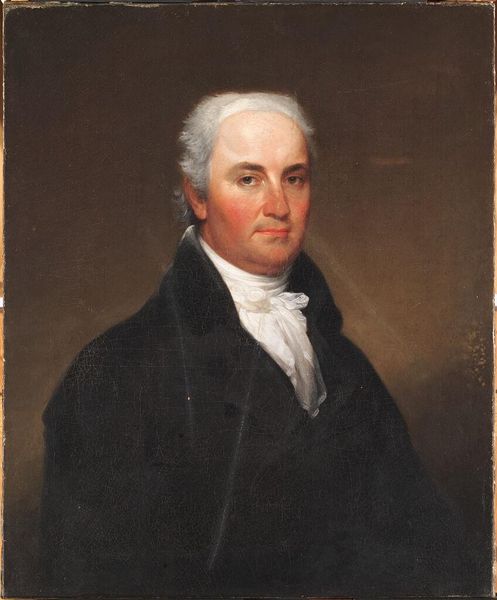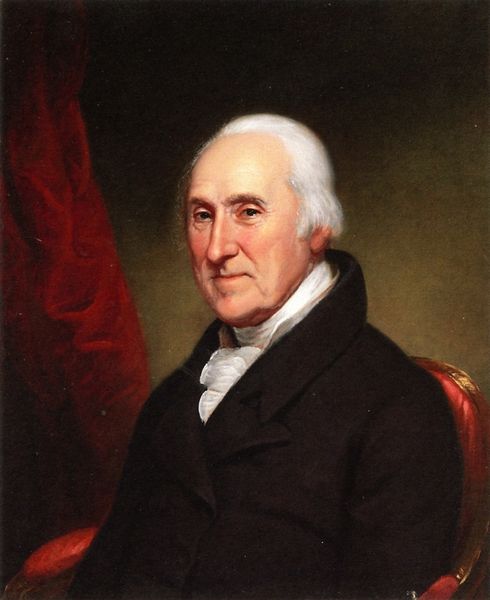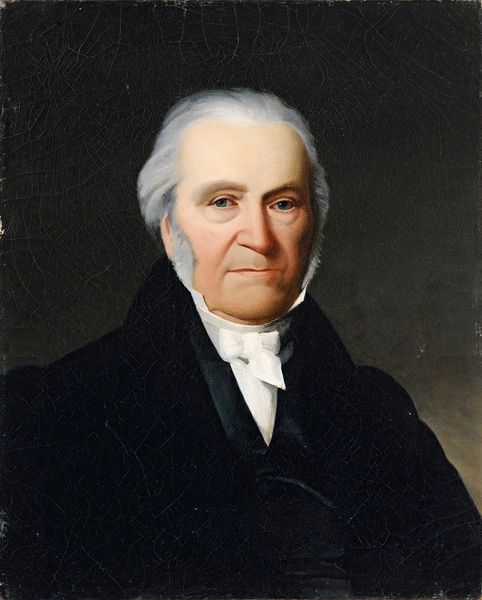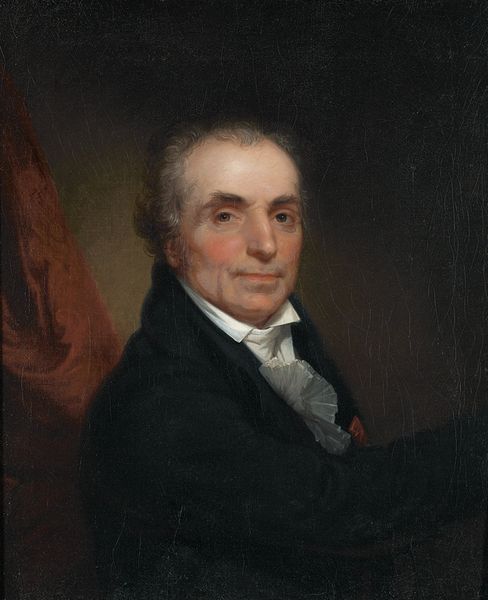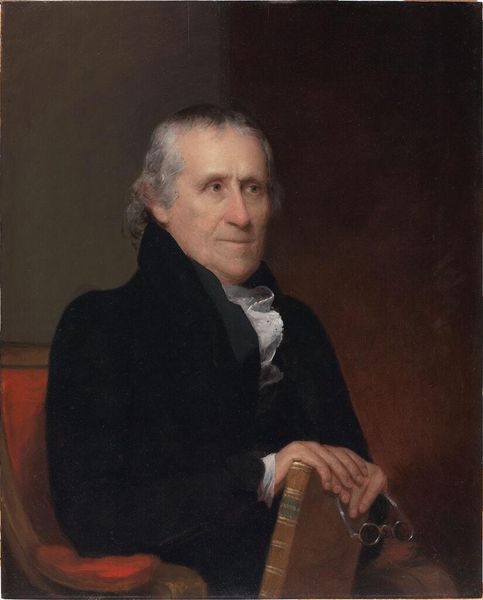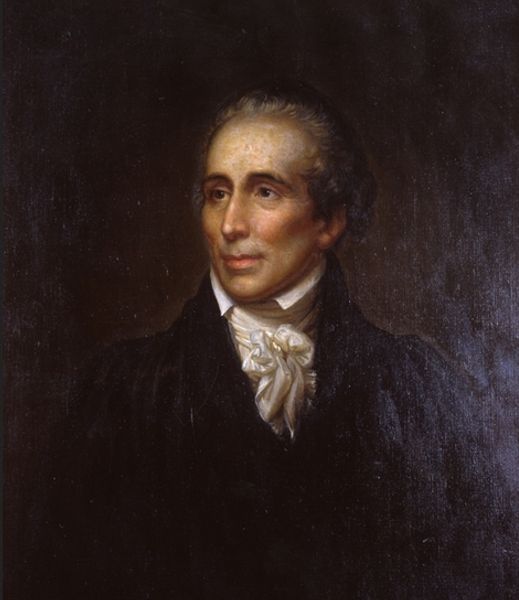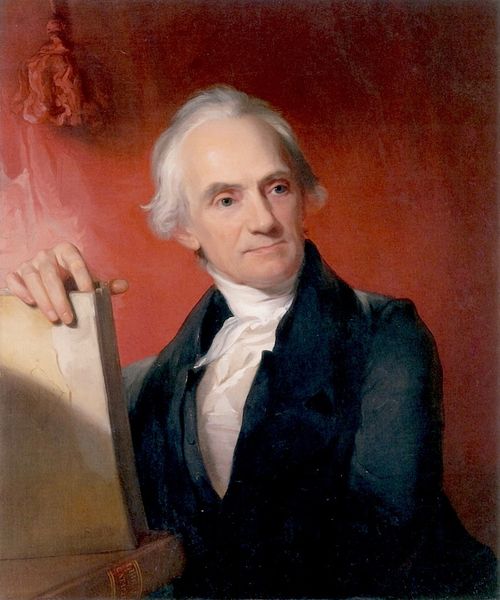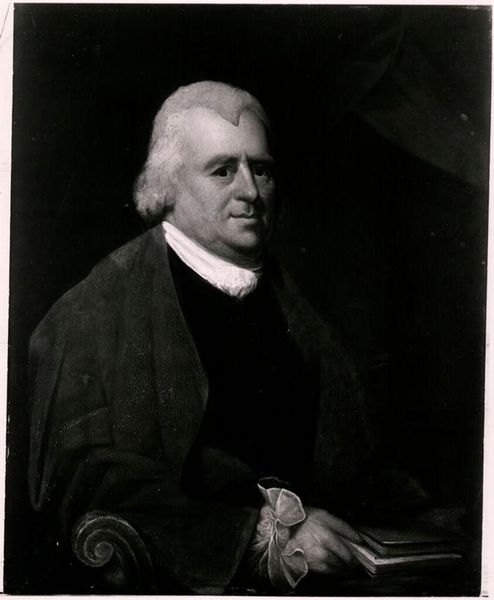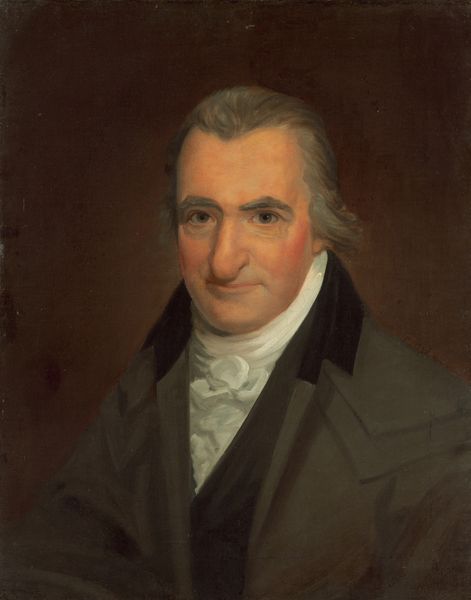
painting, oil-paint
#
portrait
#
portrait
#
painting
#
oil-paint
#
romanticism
#
history-painting
#
realism
Dimensions: 36 x 29 in. (91.4 x 73.7 cm)
Copyright: Public Domain
Editor: This is John Neagle’s portrait of John Walsh, painted sometime between 1837 and 1840. The portrait's somber palette and the sitter’s reserved expression give a feeling of formality and perhaps a touch of melancholy. What’s your take on this piece? Curator: Well, this portrait is fascinating when we consider its context. Neagle was one of the leading portrait painters in Philadelphia, a city then vying for cultural dominance. He's presenting Walsh here not just as an individual, but as a member of the established elite. The careful depiction of his attire, that austere dark suit and white cravat, all speaks to a very specific class identity. What do you make of the somewhat subdued palette choices in the historical context of the time? Editor: I suppose, compared to the vibrant colours often associated with wealth and status, the muted tones feel like a deliberate choice. A statement perhaps? Curator: Exactly! It moves away from ostentatious display and signals a different kind of power—one rooted in civic duty, perhaps, or intellectual pursuits rather than simply wealth accumulation. It asks questions about what was valued, what constituted success, and what role these men were expected to play in the burgeoning nation. Do you notice how Walsh’s gaze meets ours? Editor: Yes, it's a direct look, but it's not confrontational. It's... assessing? Curator: Precisely! It invites dialogue, but on his terms. These portraits weren’t just decorative objects. They served a social function, projecting ideals of leadership and responsibility during a time of enormous social and economic change. Editor: I see now how much more there is to a simple portrait when you consider the historical landscape in which it was created. It definitely reframes my initial viewing experience. Curator: That's the power of art history. By understanding the forces that shaped the creation and reception of the piece, we gain a far richer understanding of its significance.
Comments
No comments
Be the first to comment and join the conversation on the ultimate creative platform.

